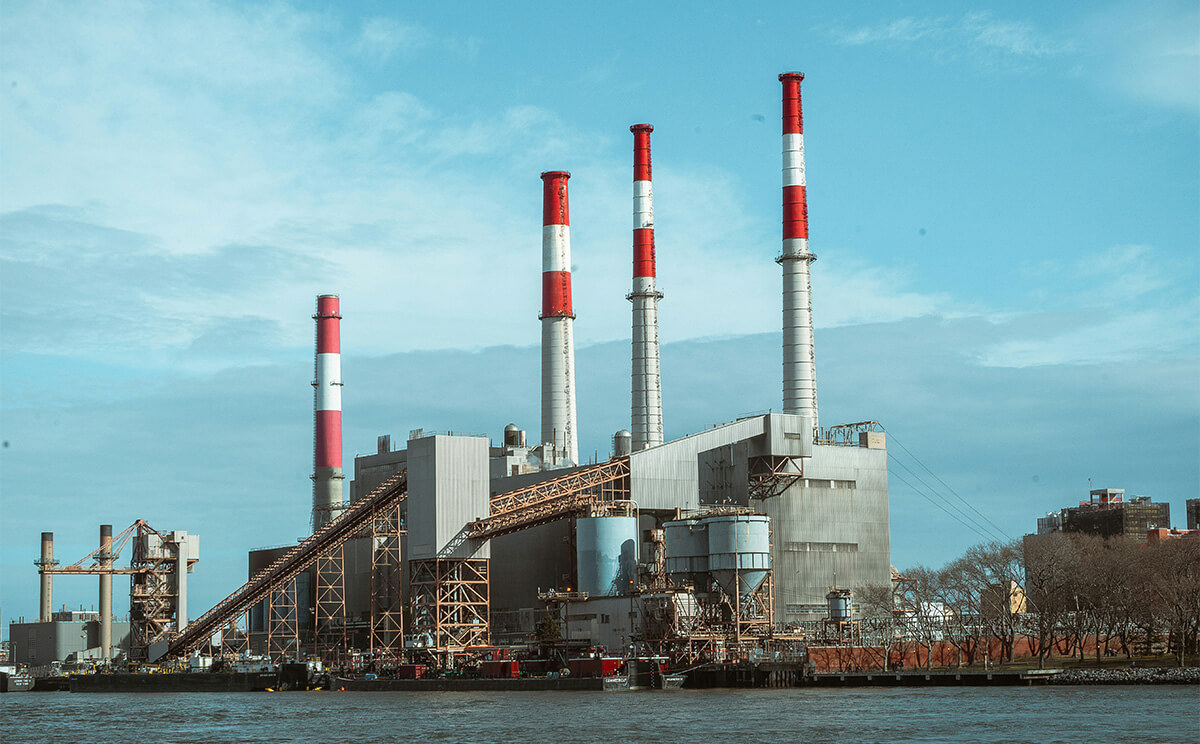For businesses that rely on CO₂, their supply chain can be frustratingly unpredictable. Shortages, price spikes, and sudden disruptions are a routine part of the landscape — not anomalies.
For years, companies have been at the mercy of a handful of suppliers and a market built on by-products from other industries. The UK industrial gas sector, for example, is dominated by three companies who control over 90% of the market between them. CO₂ shortages are rife, as starkly demonstrated in 2021 when the UK’s dependence on CO₂ as a byproduct of ammonia production caused major disruption — and a truckload that once cost £5,000 suddenly soared to £75,000.
All of this leaves businesses who depend on CO₂ vulnerable to market disruption with very few options to build resilience into their supply chains. Yet, viable alternatives to conventional CO₂ supply are starting to mature — one of which being direct air capture (DAC), which offers a fundamentally differentiated supply chain solution to futureproof business’ operations.
Why CO₂ supply is so unreliable
The problems with CO₂ supply aren't new, but they continue to plague global market dynamics, and many of them are not fixable within the current structure.
Most industrial CO₂ comes as a by-product from processes like ammonia production or natural gas extraction, which means supply is entirely dependent on the economics and operations of upstream industries. When those industries face disruption — whether from maintenance, rising costs, or contamination — the CO₂ supply so many businesses rely on can dry up overnight.
Geography only compounds this issue. CO₂ supply availability is highly regional, and transporting it adds cost and complexity. Seasonal fluctuations in production mean supply is inconsistent throughout the year. Add in the fact that a small number of global gas suppliers control the market, and the result is a system where volatility is baked in. Supply disruptions aren't rare events; they're a regular feature of today’s market.
CO₂ supply contracts and market dynamics
Historically, there hasn't been much transparency around the CO₂ supply chain. The market is concentrated, with only a few options for sourcing CO₂, and the size of a company matters. Smaller businesses requiring smaller volumes each year often lack the negotiating power to secure a CO₂ supply contract suited to them. As a result, they're more vulnerable to the impact of shortages and price swings.
The most common way of sourcing CO₂ is through an intermediary company which aggregates supply — bringing together CO₂ from various sources and packaging it up to sell to buyers. This allows CO₂ producers to reach different markets and users, but it also means buyers have little visibility into where their CO₂ supply is actually coming from. This lack of transparency can complicate lifecycle analysis and make it harder to verify sustainability claims. Buyers are left with limited control over their supply chain.

Fossil CO₂ supply: The majority of the current market
Historically, fossil-sourced CO₂ has been the main source of industrial carbon dioxide. It's extracted from processes like ammonia production or sourced from natural reservoirs. Yet, its reliability is far from guaranteed.
Location matters — Fossil-sourced CO₂ is tied to specific industrial sites or geological sources, which means accessing it as a business depends on geography and how far the CO₂ needs to travel. While it might seem intuitive to tap into the vast amounts of CO₂ emitted worldwide, most point-source emissions aren't usable without significant processing, making them impractical to capture and use without dedicated equipment and significant cost.
Downtime is inevitable — Maintenance, unexpected repairs, or broader disruptions can halt production with little warning. In summer 2022, CF Fertilisers UK announced it would stop ammonia production at its Billingham Complex due to rising natural gas costs. That same year across the Atlantic, contamination at the Jackson Dome natural CO₂ site in the US left CO₂-dependent sectors stuck with rising costs and disrupted operations.
One step removed — Companies are dependent on third-party sellers and the operational realities of industries they have no influence over. Where CO₂ is sourced indirectly, the intermediary also increases costs.
The landscape is shifting — Governments are increasingly incentivising the storage of fossil CO₂, which creates competition with its use as a feedstock and means today’s fossil CO₂ supply isn’t guaranteed in the future, especially as more carbon capture and storage (CCS) projects come online.
Biogenic CO₂ supply: A growing sustainable alternative
Biogenic CO₂ supply is newer and more sustainable than fossil-based sources, and already in operation today. Yet, it comes with its own set of constraints.
Location matters — Biogenic sources are tied to geographies where biomass can be sourced, impacting accessibility and pushing up transportation costs.
Sustainability isn't guaranteed — While biogenic CO₂ is often marketed as sustainable, it's important to account for where the biomass comes from in the first place. There are multiple layers to lifecycle analysis, and transparency is essential to ensure the supply is genuinely sustainable.

Scale is capped — Biogenic CO₂ is fundamentally limited by the finite availability of biomass and the land required to produce it. As demand grows, this ceiling becomes impossible to ignore. There's only so much sustainable biomass to go around, and competition for it is intensifying as storage projects scale up.
Seasonal impacts are unavoidable — Biomass availability fluctuates depending on the time of year, affecting production and supply. Like fossil-based CO₂, it is still a by-product from another process.
Third-party costs apply — Unless sourcing directly from the producer, CO₂ buyers are paying an intermediary, which increases costs.
DAC CO₂ supply: The futureproof solution
Direct air capture (DAC) CO₂ supply is scaling now, and represents the future of industrial-scale sustainable CO₂.
Geographically independent — Around the world, there are CO₂ 'dead zones' wherebiogenic and fossil supply are not viable. The location flexibility of DAC technology offers businesses an independent CO₂ supply virtually anywhere, making projects plausible in areas that were previously beyond the reach of CO₂ supply.
No middleman — With DAC, companies can source CO₂ directly, cutting out third-party sellers and the costs that come with them. If co-located on site, they can also cut out baked in transport and handling costs, and their associated carbon emissions.
Transparent and verifiable — DAC is a fully engineered process from start to finish, making it easy to verify exactly where CO₂ comes from and how it was produced. That means more certainty around sustainability and greater credibility compared to other, harder-to-trace sources.
Predictable pricing — CO₂ sourced from DAC is insulated from commodity market fluctuations, helping businesses avoid unexpected price shocks. Costs are steadily falling as the technology advances and deployment scales.
Dedicated supply — DAC guarantees a stable, predictable CO₂ supply that's not vulnerable to the operational realities of unrelated industries.

Futureproofing your CO₂ supply with DAC
Futureproofing your CO₂ supply isn't just about mitigating today's risks — it's about unlocking opportunities that weren't previously possible. By integrating direct air capture CO₂ into your supply mix, projects that were once out of reach due to geography or supply constraints suddenly become feasible.
Even if you continue to harness a fossil or biogenic CO2 supply, complementing it with a DAC CO₂ supply builds certainty of supply and resilience into business operations, as well as essential transparency and sustainability in the face of increasing regulatory compliance pressures.
As governments ramp up incentives for carbon storage, interest in these projects is rising. This additional demand for CO₂ puts pressure on existing sources, making it likely that the fossil and biogenic supplies available today won't be guaranteed tomorrow. DAC CO₂ offers a pathway that's independent of those shifting dynamics — a CO₂ source you can rely on and control. The question isn't whether your business needs a more reliable CO₂ supply — it's when you'll make the switch.
Ready to future-proof your CO₂ supply?
We're already integrating DAC across industry to deliver reliable, fossil-free CO₂ directly where it's needed — helping businesses who depend on an uninterrupted CO₂ supply to customise DAC solutions to their needs and lock in competitive first-mover pricing for the long-term.
Speak to our Sales team to learn more.





